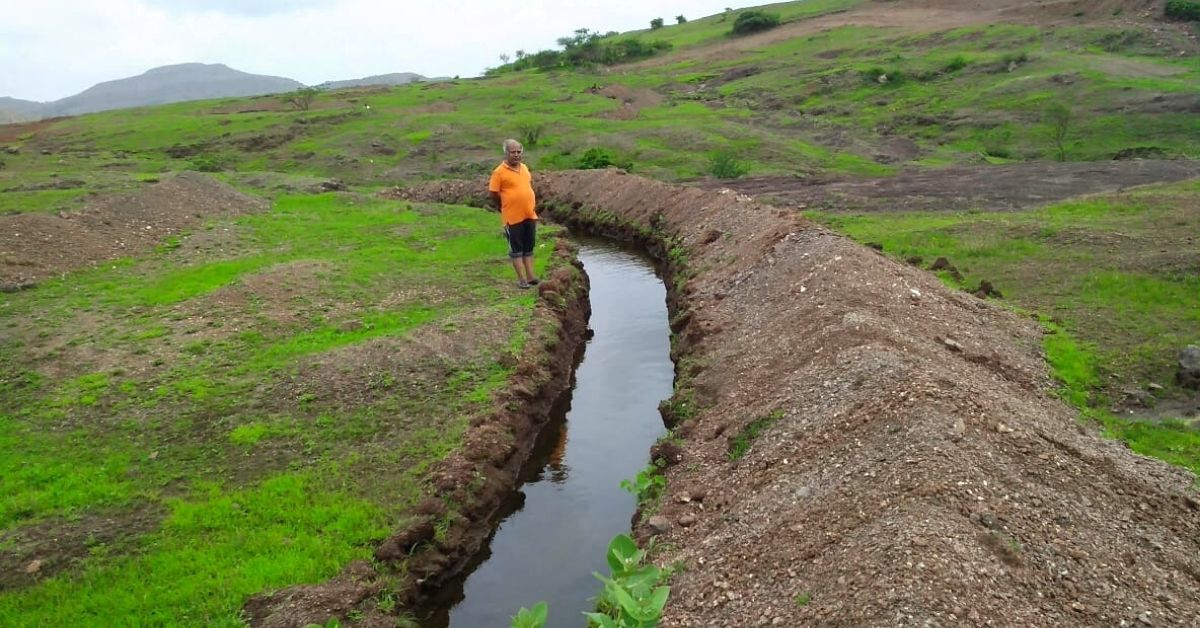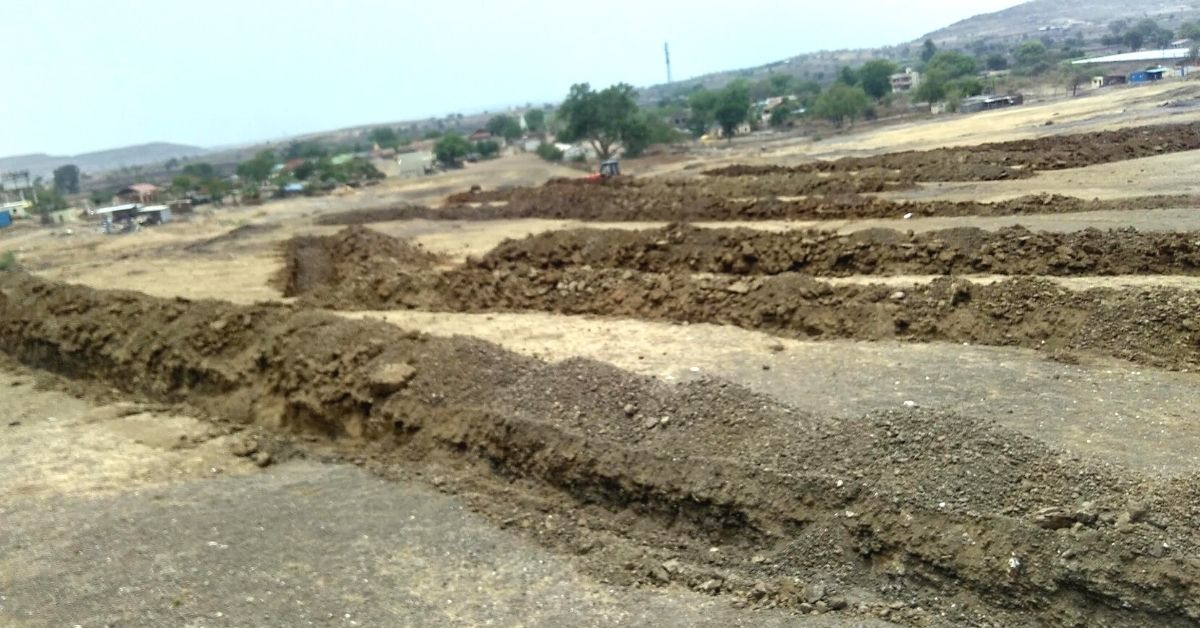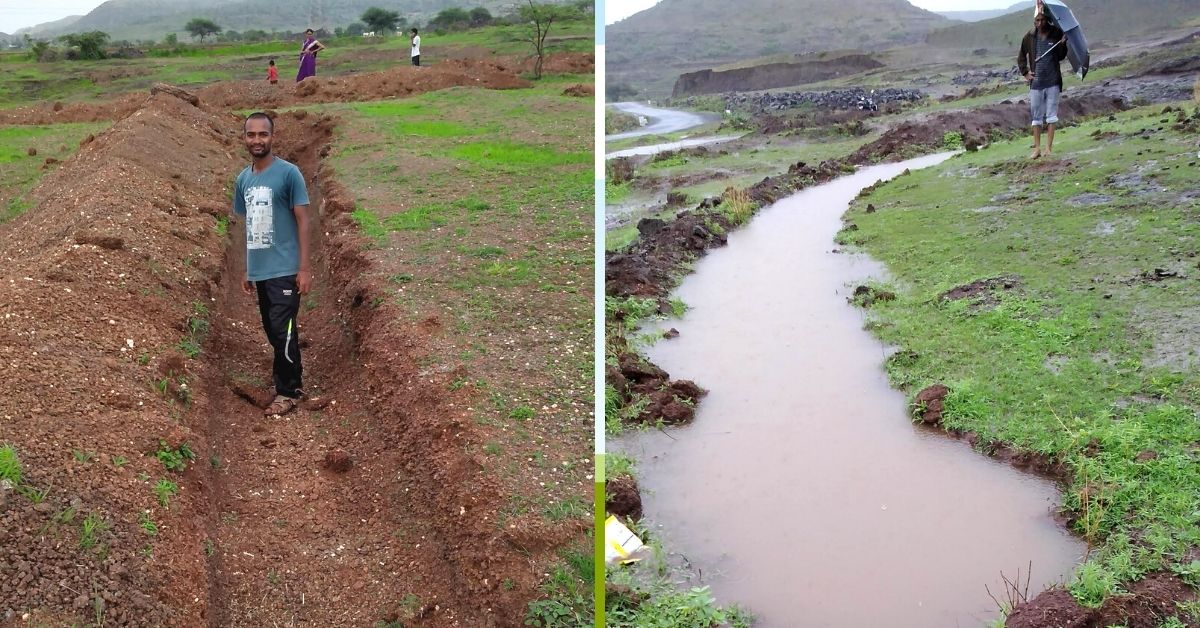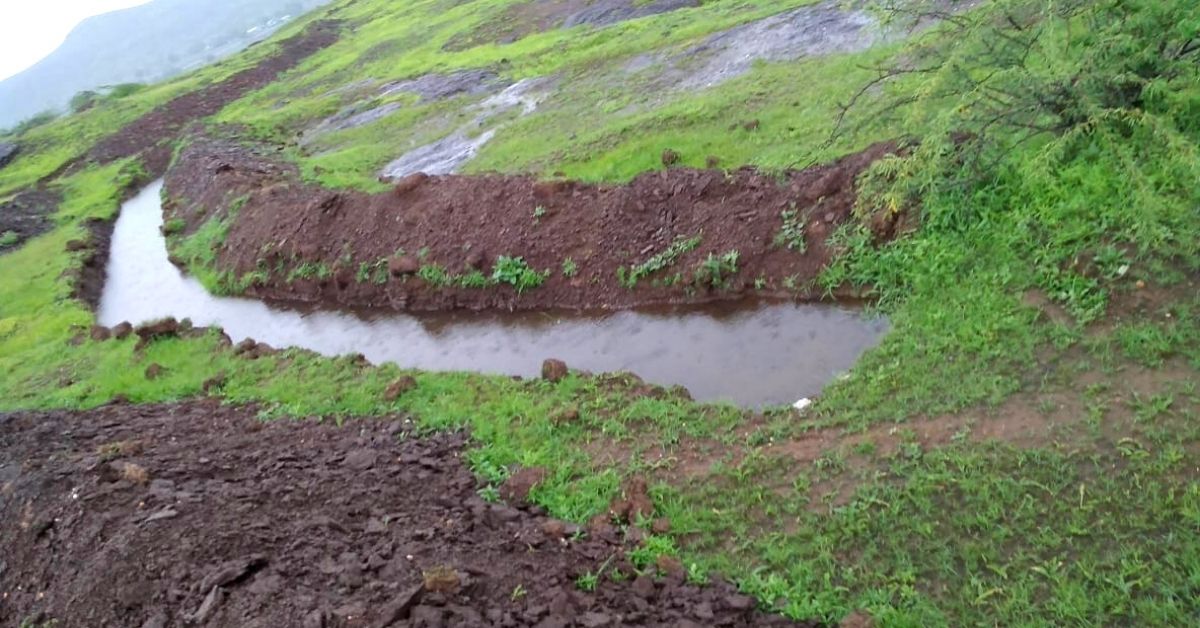Retired Professor’s Plan Helps Make Entire Village Drought-Free in Just 2 Years
Ashok Sonawane, a retired professor from Nashik, digs trenches with the help of locals in Deshwandi village to make it tanker free.

What started as a lecture on water harvesting by a retired professor, translated into a water conservation movement that made the entire village drought-free.
Deshwandi village, near Sinnar taluka about 30 km from Nashik, and formally a drought-prone area, became water self-sufficient in just two years. All thanks to the rainwater harvesting taken up by Ashok Sonawane, a retired professor from a private college in Nashik.
The political science professor, who retired in 2017, was originally working on delivering lectures and sharing his knowledge in various public forums. “I was the programme officer of the National Service Scheme (NSS) at KTHM college in Nashik. With my brief experience on water conservation efforts I used to get called for delivering lectures,” said Ashok.

Not enough rain
Ashok said things changed in 2018 when he was invited for the lecture on water conservation in Deshwandi.
“A discussion started during the interaction with youngsters in the village, in which they expressed concern that the village was facing an extended drought,” he said.
The educator said the students wondered how they could get into water conservation when the village received so little water, leaving the area bone dry.
“I suggested there could be activities done around two hills that I passed during the visit. I also shared how trenches could get dug to allow rainwater to get stored in the belly of the ground,” Ashok added.
After some discussions and another visit to the site, the retired professor and about a dozen youngsters teamed up to experiment with some rainwater harvesting initiatives.
“Getting the permissions from the gram panchayat was the first hurdle. After much convincing, we got about 32 hectares of land to dig trenches around the village. The work began with some donations and contributions – like a digger and tools,” Ashok said.
“Digging has to be done during peak summer in extreme heat. It could not be done in the monsoon, and many farmers grow crops nearby. So it had to finish in summer,” he added.

First success
“During the first monsoon, a substantial amount of water was collected as 500 mm rainfall was recorded in the year 2018. We succeeded in getting some rain to percolate in the ground. Witnessing some success the gram panchayat offered another few hectares for the next season,” he added.
Read More: Learning From The Cholas, IAS Officer Restores 178 Water Bodies in 3 Months!
Ashok said this work – about 100 hectares of trenches along the two hills – helped increase the groundwater table substantially.
“We spent about Rs 80,000 on the entire work, including many free donations and contributions. Sometimes I paid from my pocket, apart from my daily travel of 60 km spent on fuel,” Ashok said.
To avoid soil erosion in the trenches, the group also planted grass and thorny shrubs along the trenches.
The village of about 1,500 was soon amazed. “The Zilla Parishad declared it as drought-free area as no water tankers had been called for the two monsoon seasons,” Ashok added with pride.

Long way ahead
Pravin Kardak, a social activist contributing to the cause, said, “We saw some people working and decided to join the cause. Many residents doubted and even made fun of us at times. There was very little support.”
Pravin said the village was originally dependent on tankers from December itself. “The situation is much better now as the village is water sufficient. Very few people call for tankers now,” he added.
The social activist said that 32 barrages from the British era were also revived. They acted as water canals, for better water flow and assisting the percolation.
“Since then other programmes on water conservation are also done to improve the situation,” Pravin said.
Ashok said that plans are underway to take up other drought-prone villages nearby and help improve the groundwater table.
(Edited by Vinayak Hegde)
If you found our stories insightful, informative, or even just enjoyable, we invite you to consider making a voluntary payment to support the work we do at The Better India. Your contribution helps us continue producing quality content that educates, inspires, and drives positive change.
Choose one of the payment options below for your contribution-
By paying for the stories you value, you directly contribute to sustaining our efforts focused on making a difference in the world. Together, let’s ensure that impactful stories continue to be told and shared, enriching lives and communities alike.
Thank you for your support. Here are some frequently asked questions you might find helpful to know why you are contributing?


This story made me
-
97
-
121
-
89
-
167











